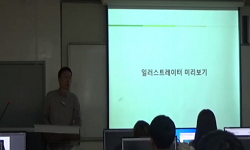Background : From the late 1990s to the early 2000s, the industrial structure of South Korean society, including design, began to be reorganized due to economic crises such as the foreign exchange crisis. In particular, the subjects performing graphic...
http://chineseinput.net/에서 pinyin(병음)방식으로 중국어를 변환할 수 있습니다.
변환된 중국어를 복사하여 사용하시면 됩니다.
- 中文 을 입력하시려면 zhongwen을 입력하시고 space를누르시면됩니다.
- 北京 을 입력하시려면 beijing을 입력하시고 space를 누르시면 됩니다.
https://www.riss.kr/link?id=A109237787
- 저자
- 발행기관
- 학술지명
- 권호사항
-
발행연도
2024
-
작성언어
Korean
-
주제어
Small Studio ; 2010s ; Korean History of Design ; Visual Communication Design ; Graphic Design ; Role Model ; 소규모 스튜디오 ; 2010년대 ; 한국 디자인사 ; 시각디자인 ; 그래픽 디자인 ; 역할 모델
-
KDC
658
-
등재정보
KCI등재,SCOPUS
-
자료형태
학술저널
- 발행기관 URL
-
수록면
337-353(17쪽)
- 제공처
-
0
상세조회 -
0
다운로드
부가정보
다국어 초록 (Multilingual Abstract)
Background : From the late 1990s to the early 2000s, the industrial structure of South Korean society, including design, began to be reorganized due to economic crises such as the foreign exchange crisis. In particular, the subjects performing graphic design were continuously being miniaturized. Small studios that appeared in the mid-2000s began to stand out in the field of culture and arts and achieved cultural achievements. However, in the 2010s, doubts began to arise about the sustainability of small studios. This study aims to reveal that in the 2010s, the members and culture of small studios matured and began to specify and systematize their roles and survival models.
Methods : This study first analyzed the limitations and sustainability issues of small-scale studios raised in the exhibition Graphic Design, 2005-2015, Seoul from various angles. Afterwards, we analyzed articles, interviews, and writings published in magazines, academic journals, daily newspapers, and books in the design field to track the activities of small studios from the early to mid-2010s. We took a closer look at the strategy and the process of building a survival model through it.
Results : In the 2010s, small studios were not limited to just a few cases, and new production entities continued to emerge. First, from the beginning, members of the small studio did not stop at performing design services but showed autonomous and experimental work, demonstrating capabilities on par with artists in the field of culture and arts. As a result, they were able to acquire the status of equal collaborators from the planning stage on projects in the field of culture and arts. Based on this, starting in the 2010s, small studios were able to win projects from cultural and artistic institutions in various fields in South Korea. Second, the small studio discovered new cultural production and consumption groups by faithfully understanding and analyzing the economic, social, and cultural background of the time and presented a new role model in the publishing field. By making literary books recognized as preferred consumption products, the small studio succeeded in commercializing content for the taste community, and later spread into a movement of small studios adopting similar methodologies. Third, they proposed a communication method that shortened the complex decision-making process in corporate communication and maximized the creativity of small studios. This could be of great significance in overcoming the limitations of small studios that find it difficult to pursue profits.
Conclusions : Small studios that emerged in the 2000s were attracting attention by producing autonomous and experimental work. Entering the 2010s, small studios have established new roles and survival models by systematizing methodologies and strategies and carrying out various projects in the fields of culture and arts, publishing, and corporate communication. This has allowed small studios to become more common and a common role and survival model since the late 2010s.
동일학술지(권/호) 다른 논문
-
인지정보 디자인 관점에서 인천광역시 매체별 미디어 홍보 콘텐츠에 대한 수용자 인식 분석
- 한국디자인학회
- 이한주
- 2024
- KCI등재,SCOPUS
-
- 한국디자인학회
- 윤훈
- 2024
- KCI등재,SCOPUS
-
멀티모달 청사진 기반 DX 박물관 전략 연구: Z세대를 중심으로
- 한국디자인학회
- 이아현
- 2024
- KCI등재,SCOPUS
-
Unveiling Gender Differences in Visual Metaphor Interpretation in Indian Banking Print Advertising
- 한국디자인학회
- Partha Das , Ankit Basak
- 2024
- KCI등재,SCOPUS






 DBpia
DBpia






